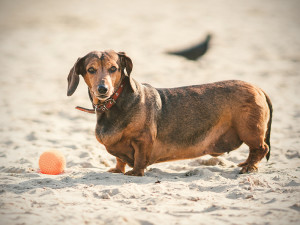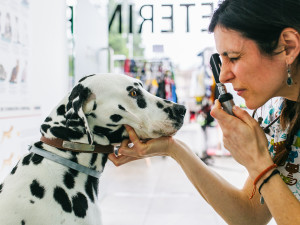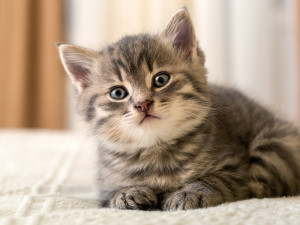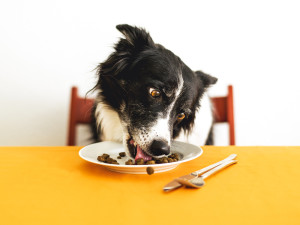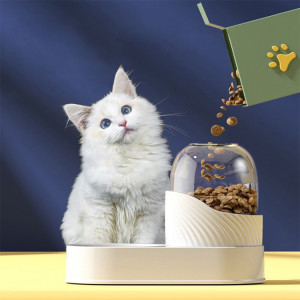Wondering How Big Your Puppy or Kitten Is Gonna Get?
We know, our pets grow up too fast. But seriously, how fast is too fast (or slow)? Kinship and Waltham Petcare Science Institute created a simple tool to help your new pet’s growth stay on track.
Be honest — if there was a magic button that would keep your puppy or kitten perfectly tiny and playful forever, you’d probably push it. Or at least think about it. However, while the idea of a permanent baby animal has a certain appeal, puppies and kittens do, in fact, need to grow up. And it turns out, how fast or slow they grow can influence their lifelong health. But how slow is too slow, and how fast is too fast? And how can you help your pet grow at just the right rate?
You don’t have to figure it all out on your own. We teamed up with the Waltham Petcare Science Instituteopens in new tab to create an interactive version of their evidence-based puppy and kitten growth charts. With this tool, you can track your little buddy’s weight and — with input from your vet — make better-informed decisions about their nutrition and care. So how exactly do these charts work? We sat down with Dr. Alex Germanopens in new tab, one of the brains behind the growth charts and a professor of Small Animal Medicine at the University of Liverpool, to get the scoop.
Why growth charts are helpful
“The puppy and kitten growth charts are similar to growth charts for kids, with curves that show typical growth trajectories for populations of healthy individuals,” Dr. German says. “In fact, these charts use the same mathematical modeling as the charts the World Health Organization (WHO) developed for humans.” There are nine curves — called centile lines — on each chart. Typically, a healthy puppy or kitten will stay in roughly the same centile throughout their growth stage.
By regularly using the tool to record your pet’s weight and plot changes on the chart, you can more quickly identify possible growth issues. For example, if your puppy crosses over into higher centiles, that could be a sign that they’re growing too fast. If they cross into lower centiles, they may be growing slower than expected. Why does the pace of growth matter? Slow growth may be a sign that your pet has an underlying illness. Rapid growth in medium and large-breed puppies can cause skeletal issues, such as osteochondrosis and hip dysplasia — conditions that will affect them for the rest of their lives. And for all puppies and kittens, putting on weight too fast could mean they are on a path to obesity.
How much do you spend on your pet per year?
And obesity is a big deal. According to Dr. German, half of all adult dogs and cats are above ideal weight — and extra pounds can lead to extra problems down the road. “Obesity in pets can contribute to arthritis, respiratory issues, diabetes, poor quality of life, and even shorter lifespans. And it’s a lot easier to prevent obesity than it is to help a pet lose weight. The puppy and kitten growth charts are a fantastic tool for staying on top of a pet’s weight and spotting issues early, when they are easier to correct.”
How to use the growth charts
Regular weigh-ins, ideally monthly during your puppy or kitten’s growth stage, will deliver the most actionable results. You can do these weigh-ins at home or at your veterinary clinic, then enter the results into the growth chart tool. After a few entries, you’ll start to see the curve develop and get a sense for how your pet’s growth is progressing.
Now, just because your puppy or kitten veers from a typical growth curve doesn’t mean it’s time to panic. And it doesn’t mean that you should immediately adjust your pet’s food intake up or down. But it could indicate that it’s time to check in with your veterinarian. Together, you can look at the growth trajectory, consider your puppy or kitten’s overall health, and determine if you should make any adjustments to care.
“The growth charts are a great way to keep pet parents engaged in their puppy’s or kitten’s development and give them reassurance that they’re staying on top of their pet’s health,” Dr. German adds. And the tracking doesn’t need to stop once your pet reaches adulthood. In fact, regularly weighing pets throughout their lives can alert you to subtle changes that would be hard to see with the naked eye.
“The only way you really know how much to feed your pet is by whether they are gaining, maintaining, or losing weight. If you’re carefully measuring your dog’s food every day and he’s gaining weight, you know you’re feeding too much. If he’s losing, you’re feeding too little. So even after pets reach their adult weight, I still recommend that pet owners weigh them every three months. This will allow them to make any needed adjustments to their pet’s food intake before a weight problem gets out of hand and becomes more difficult to manage,” he explains.
Start plotting
If you want to track your pet’s growth, we’ve made it easy. Just create an account on Kinship and added your puppy or kitten to your profile. Then head over to the growth chart tool and start logging weight entries every four weeks until your little kiddo is all grown up. The process is simple, and the information invaluable.




